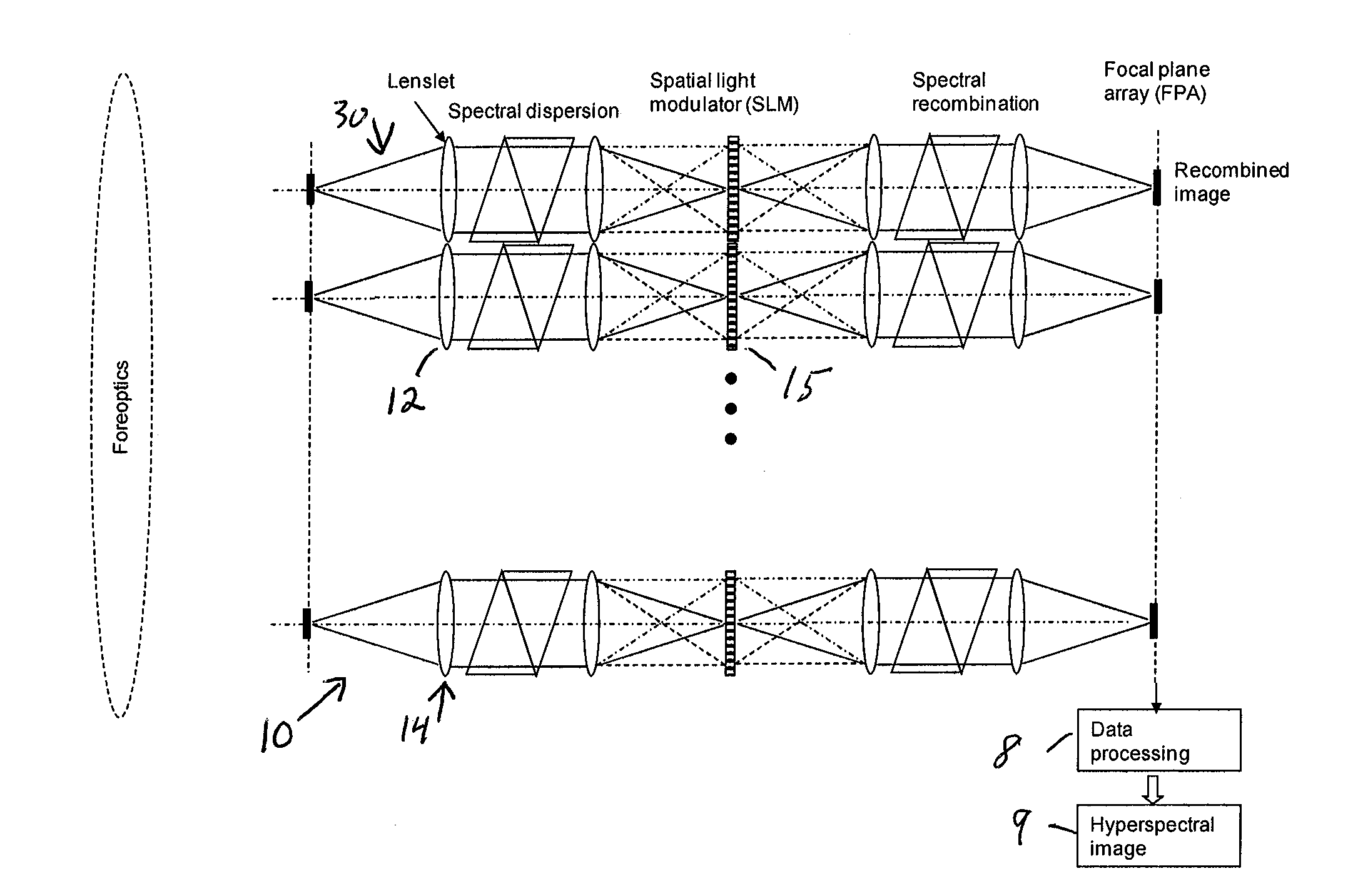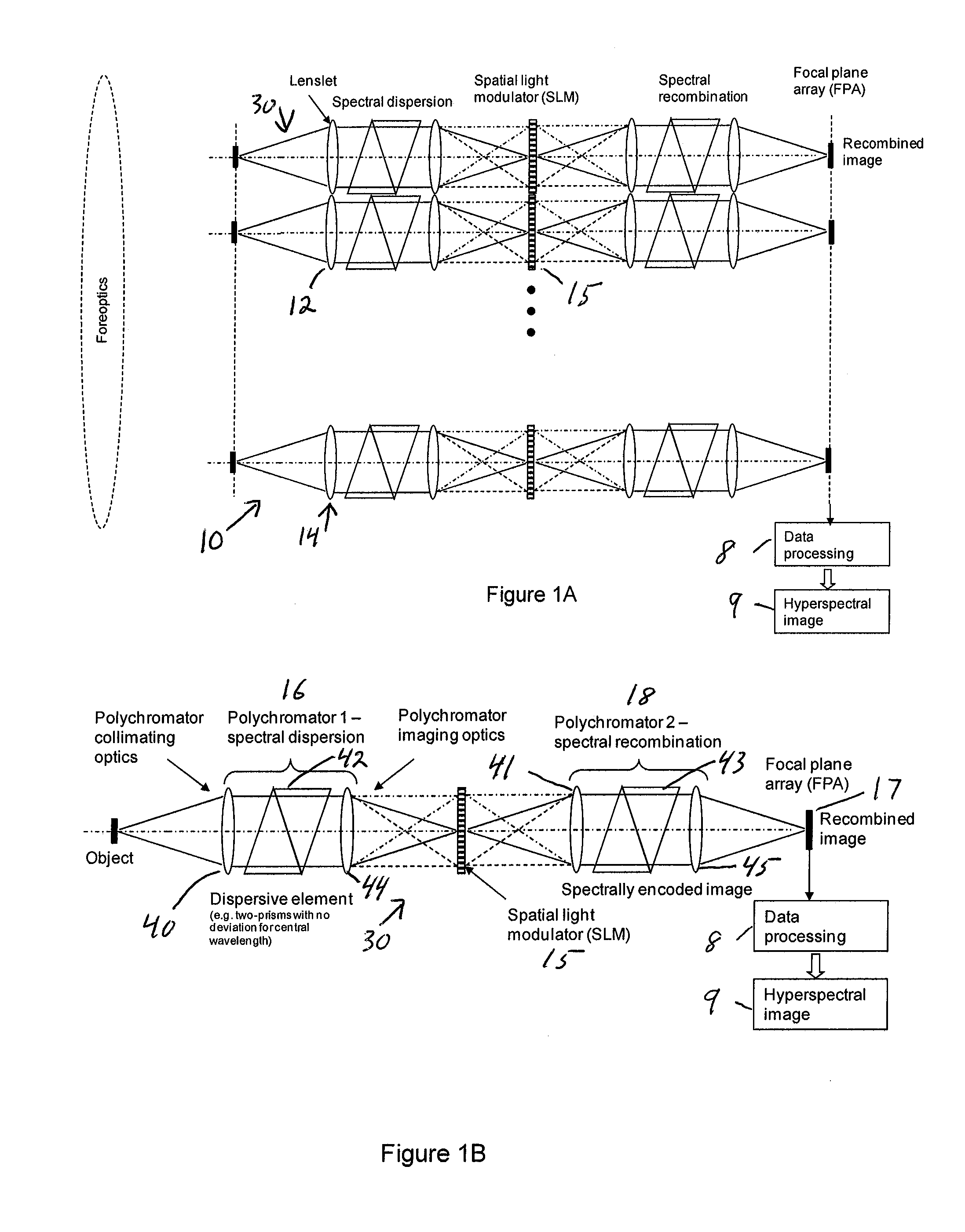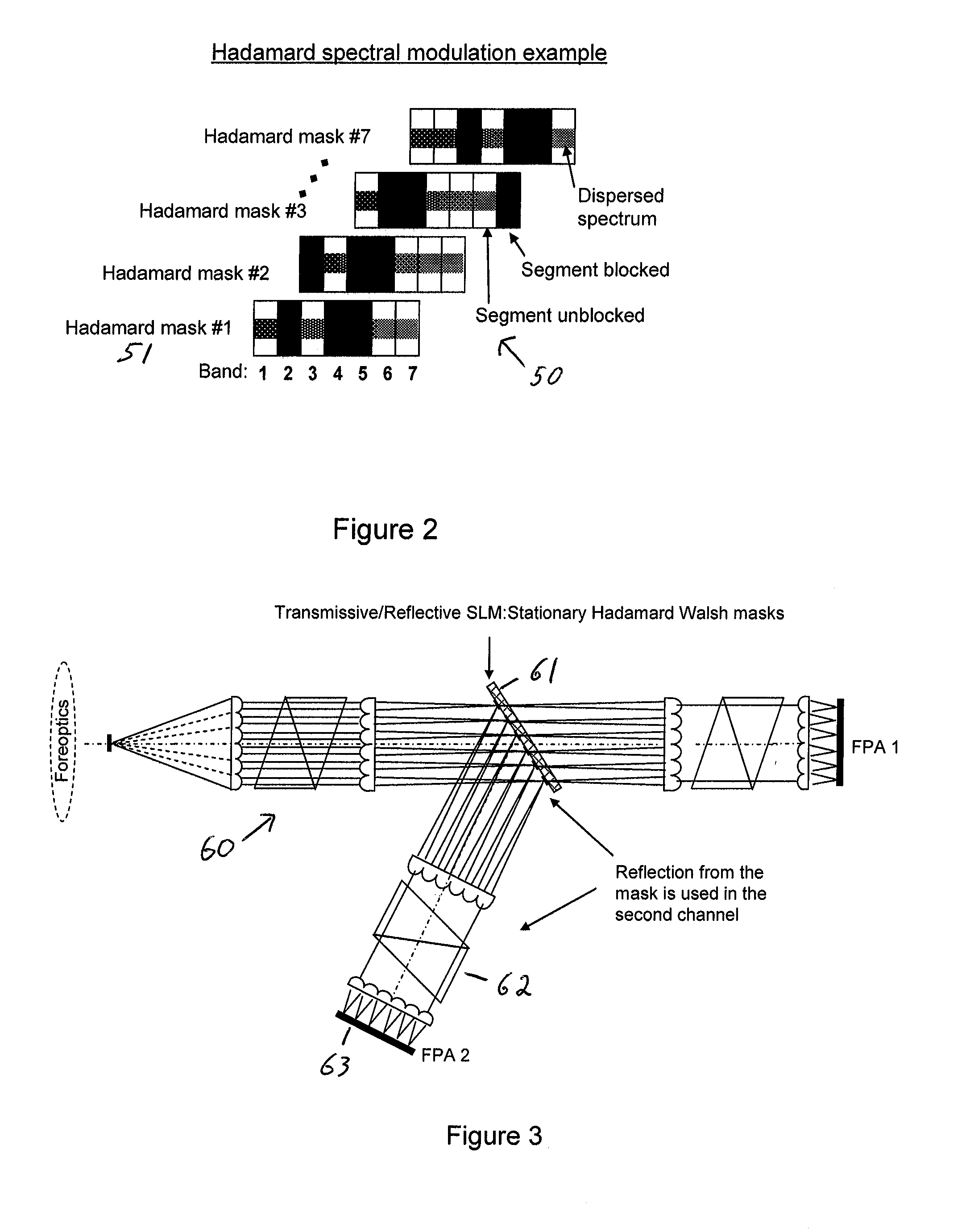Single-Shot Spectral Imager
a single-shot, spectral imager technology, applied in the field of single-shot spectral imagers, hyperspectral imaging, multi-spectral imaging or imaging spectrometry, can solve the problem of only effective approach
- Summary
- Abstract
- Description
- Claims
- Application Information
AI Technical Summary
Benefits of technology
Problems solved by technology
Method used
Image
Examples
Embodiment Construction
[0026]The MASC imager 10 presented on FIGS. 1A and 1B may use lenslet arrays to divide the focal plane into a plurality of (N) spectrally encoded sub-images. To obtain the single-shot spectral image, light from the object passes through a spectral encoder consisting of: (1) a two dimensional lenslet array, (2) a spectrally dispersing element (3) a spatial light modulator (SLM) and (4) a spectrally de-dispersing (spectrally recombining) element. A single lenslet subsystem optical path is presented in FIG. 1B. The light is spectrally dispersed by the spectrally dispersing element and an intermediate, dispersed sub-image is formed at the SLM plane. The number of sub-images is at least equal to the number of spectral bands N to be recorded. The SLM for each intermediate sub-image may be a static transmission mask containing N binary on-off elements corresponding to the Hadamard transform (HT) or other orthogonal or non-orthogonal transform method.
[0027]The spectrally-encoded intermediat...
PUM
 Login to View More
Login to View More Abstract
Description
Claims
Application Information
 Login to View More
Login to View More - R&D
- Intellectual Property
- Life Sciences
- Materials
- Tech Scout
- Unparalleled Data Quality
- Higher Quality Content
- 60% Fewer Hallucinations
Browse by: Latest US Patents, China's latest patents, Technical Efficacy Thesaurus, Application Domain, Technology Topic, Popular Technical Reports.
© 2025 PatSnap. All rights reserved.Legal|Privacy policy|Modern Slavery Act Transparency Statement|Sitemap|About US| Contact US: help@patsnap.com



